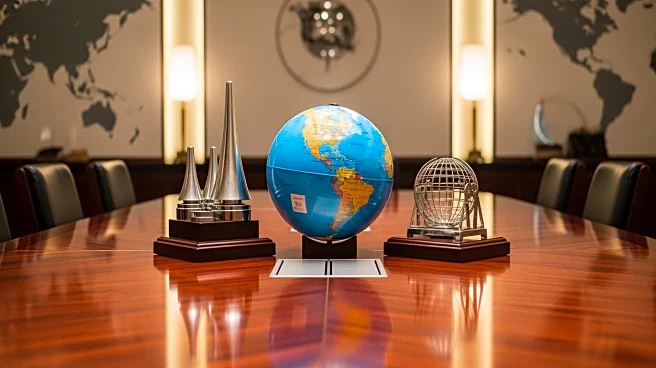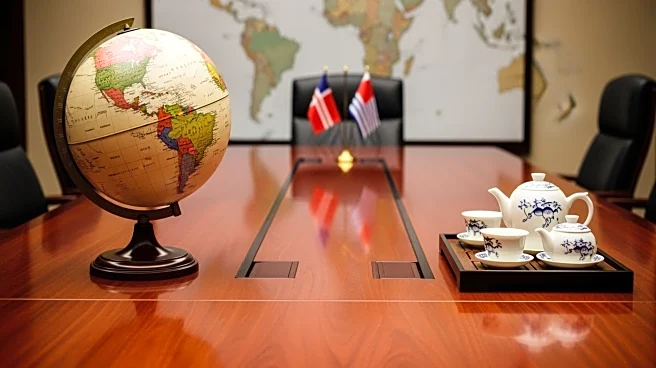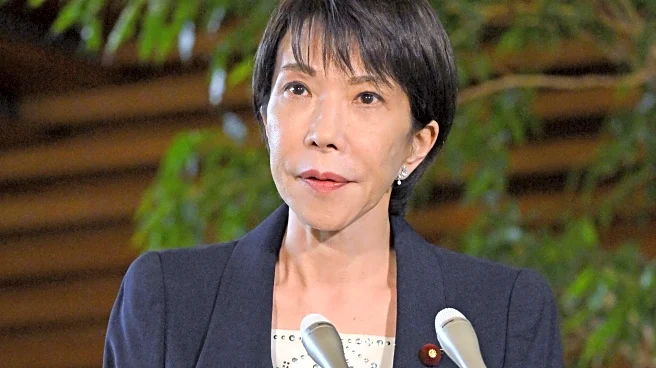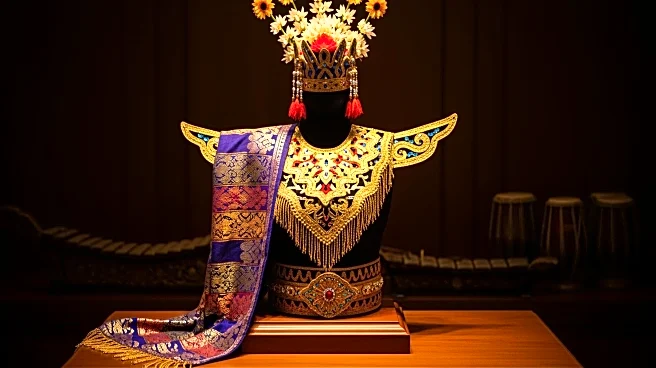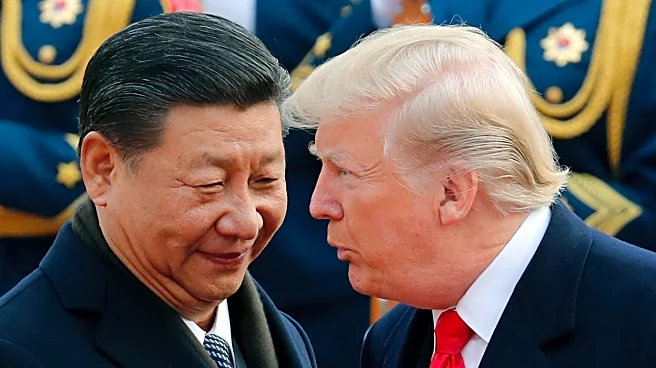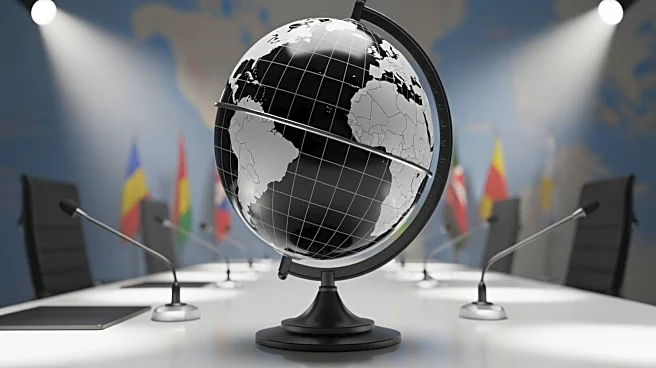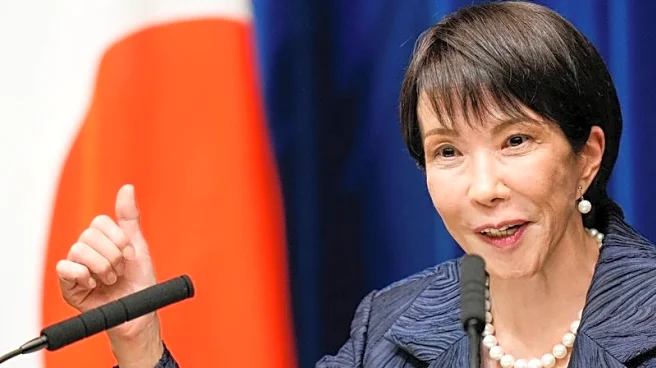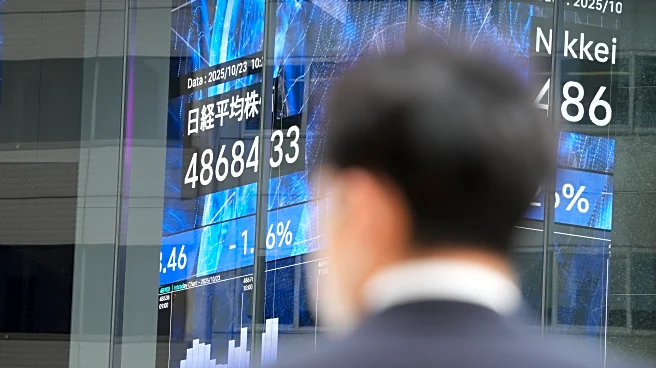What's Happening?
President Trump is set to visit Tokyo, marking his first trip of his current term, where he will meet with Japan's newly elected Prime Minister Sanae Takaichi. The discussions are expected to focus on the
U.S.-Japan trade agreement, which includes Japan agreeing to 15 percent tariffs on all its exports to the United States and a promise to invest $550 billion into the U.S. economy. Trump's approach to trade, influenced by his perception of Japan from the 1980s, aims to reshape the global economy by imposing tariffs on wealthy economies. However, Japan's current economic status differs significantly from the booming era of the 1980s, now facing challenges such as a rapidly aging population, worker shortages, and a lagging automobile industry.
Why It's Important?
The meeting between President Trump and Prime Minister Takaichi is significant as it highlights the ongoing trade dynamics between the U.S. and Japan, two major global economies. The tariffs and investment commitments could have substantial impacts on both countries' economic landscapes. For the U.S., the agreement may bolster economic growth and job creation, while Japan seeks to reinvigorate its economy amidst prolonged stagnation. The trade policies reflect Trump's longstanding views on economic competition, particularly with Japan, and could influence future trade negotiations with other countries.
What's Next?
As President Trump arrives in Tokyo, the discussions with Prime Minister Takaichi may lead to further adjustments in the trade agreement, potentially affecting tariffs and investment strategies. The outcome of these talks could influence U.S.-Japan relations and set precedents for future trade negotiations. Additionally, Japan's efforts to address its economic challenges, such as the aging population and worker shortages, may be impacted by the trade agreement's terms and the broader economic policies discussed during the visit.
Beyond the Headlines
The trade agreement and President Trump's visit to Japan may have deeper implications for international trade policies and economic alliances. The focus on tariffs and investment highlights the shifting dynamics in global trade, where countries are reassessing their economic strategies in response to changing political and economic landscapes. The meeting also underscores the importance of diplomatic relations in navigating complex economic challenges and fostering cooperation between nations.


